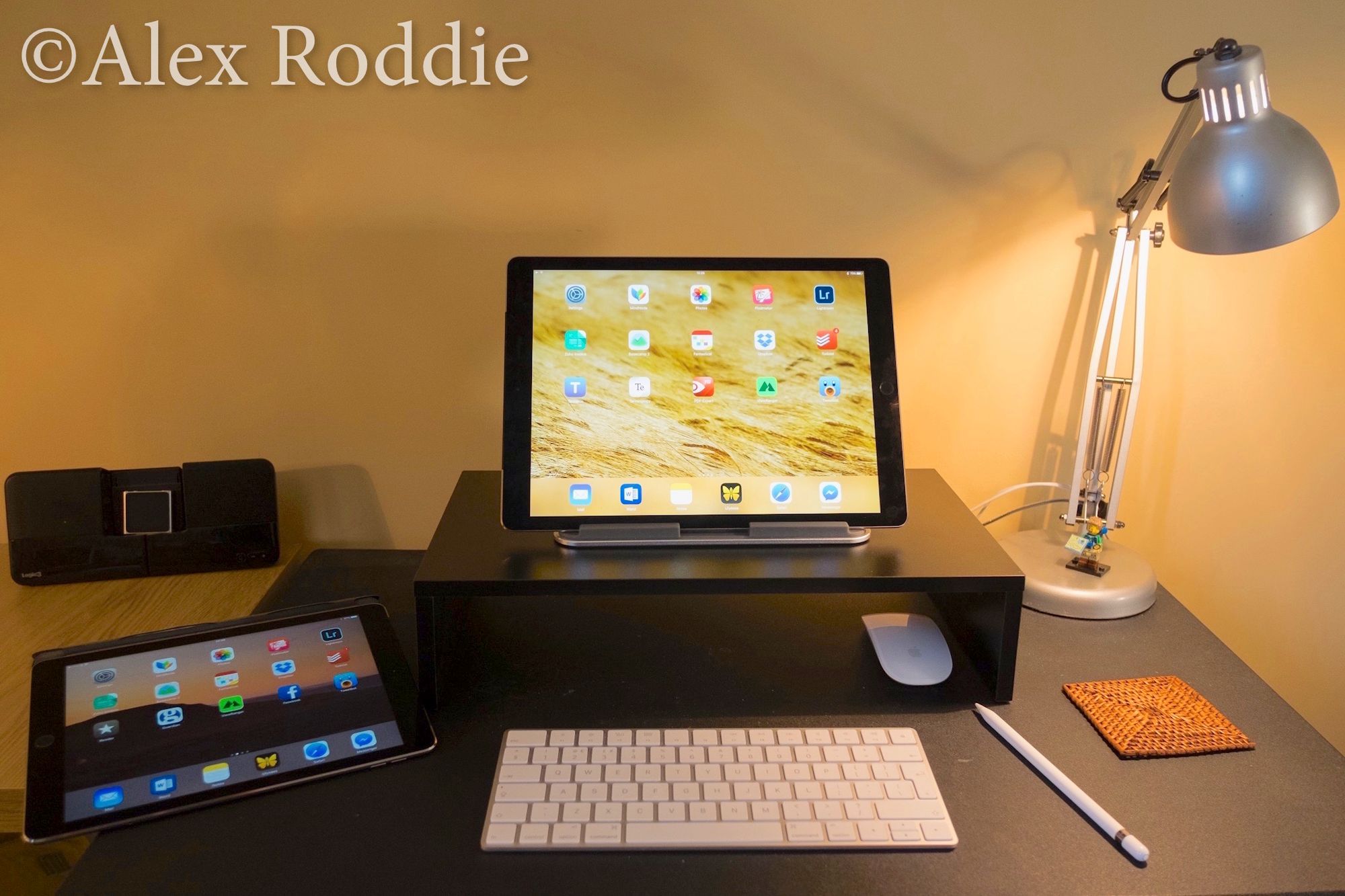iOS and the power of perception

As a long-term user of Apple computers, I struggle to find the right way forward in today’s strange times. I thought I had it figured out. But there’s an important factor I failed to take into consideration: client perception.
In The wrong side of history, I wrote about how the Mac is facing an existential crisis. I also pondered whether or not I could move my workflows to iOS if push came to shove.
Shortly after writing that article, rather than waiting to be pushed, I decided to jump.
One month working entirely from iOS
I’ve been performing some tasks from my iPad for about a year, and had already transferred a number of workflows to more iOS-friendly ways of doing things, so this was not really a big move for me. But given the fact that I often prefer to work from an iPad, I decided to take this line of thought to its logical conclusion and bought a 12.9″ iPad Pro.
There’s no big story here. Work continued as it had before, using the same apps and services. Some things were less smooth than on a Mac, as I expected, but most things were as good or slightly better. A few tasks, such as proofreading magazine PDFs and creating GPX files in ViewRanger, were significantly better. Where there were gaps, Workflow filled them and helped to save me time.
But some niggles remained, despite my familiarity with iOS as a work platform. The big one is the inability to display two documents of the same type side by side. One day, I was faced with the simple task of joining multiple Word documents into a single manuscript (maintaining all formatting and tracked changes), and just couldn’t find any simple way to do it. I ended up VNCing into my headless desktop Mac and doing it on there1. In general, Word for iOS remains far more pleasant to use than the macOS version, but lacks a few features that I occasionally still need.
Using Lightroom on the iPad has proven to be very smooth in every respect but one. Syncing big batches of raw files to my desktop catalogue is still a painstaking process, because the screen has to be left on and Lightroom in the foreground. I usually leave the iPad on overnight for this process to complete. It’s hardly a major problem for my workflow, but it’s definitely more friction than I would have liked, and I can’t foresee this being fixed unless there are fundamental changes to the way iOS treats third-party apps.
In general, I’ve been surprised by how easy it is to do all of my daily work from iOS. The quality of my output has not changed, and productivity has been about the same or perhaps even slightly higher2.
The perception problem
But there’s a big problem, and it’s one I hadn’t even considered. Some clients are just not ready for the idea that their work can be completed by an editor using an iPad.
Over the last twenty-four hours, two potential clients have decided not to hire me purely because they had seen me discussing my iPad work setup on Twitter. On one hand, I believe this should not matter at all. Who cares which tools an editor uses, so long as the output quality remains the same and deadlines are met? I have completed dozens of jobs using an iPad over the last year, and I have not heard a single complaint from any of my established clients. To them, there’s simply no difference.
On the other hand, perception is important. Most people regard iPads as little more than toys – lightweight computers for playing games and watching videos. The very idea that actual work can be done on an iPad is almost completely alien to most normal people out there. Tech bloggers might think otherwise, but this is still true.
To use an analogy, it’s why some pro photographers still won’t consider mirrorless cameras. Clients often expect photographers to have big DSLRs. If they turn up with a compact mirrorless camera, they might wonder why they’re paying the photographer so much, even if the output quality is identical.
You might ask why I don’t simply avoid discussing the hardware I use online. But it’s too late for that – I’ve mentioned it many times, and the information is out there now. It would be ridiculous to go back and redact every reference I’ve made to working from iOS over the last year. The fact that I’d even consider doing this indicates there is a problem.
Ultimately, I can’t afford to risk putting off potential clients just because I find it more pleasant working from an iPad. That’s just a bad business decision. If I had realised this would be a factor, I probably wouldn’t have even considered switching.
Edit 07/02/17
I’ve received a bit of feedback about this, and the theme common to most of the comments is something like ‘this should be none of potential clients’ business’. I’d like to clarify my position here, because while I agree in principle, I also see the other side of the argument.
Editors occupy a unique position of trust. When a writer gives their work to an editor, the writer places a huge amount of trust in the abilities of that editor to treat their work with respect, expertise and attention. If there is no trust, there is no job – it’s as simple as that. I believe the editor has to not only be professional, but to appear professional.
Right now, using a traditional computer is part of that image. Laptop or desktop, Windows or Mac, people don’t seem to care – but there is resistance to the idea of performing editorial work on iOS, and I’m not going to swim against that particular current.
Giving the Mac another chance
I believe in the future of iOS as a capable platform for professionals, but I’m not quite sure I believe in its present.
While the Mac struggles from flagging enthusiasm within Apple, the iPad struggles because it started out as little more than a luxury back in 2010, and Apple has failed to demonstrate to customers what the iPad is capable of in 2017. Sales continue to crash despite the introduction of the iPad Pro line.
There are holes within the operating system, too. While power users and iOS evangelists have the patience to find the workarounds and plug those holes with tools like Workflow, the average user will simply give up in frustration. Some things are just too different. Perhaps the iPad needs to become more like the Mac, but that introduces more problems than it solves. I’m not sure what the answer is, to be honest. I remain worried that Apple will ruin both the iPad and the Mac by trying to make them meet in the middle.
So, despite my many problems with the Macintosh, I’m back using one as my main work machine. Maybe in a year or two things will be different. It’s a strange time to be an Apple user, that’s for sure!
Alex Roddie Newsletter
Subscribe here to receive my occasional personal newsletter in your inbox. (For the fun stuff, please consider subscribing to Alpenglow Journal instead!)



